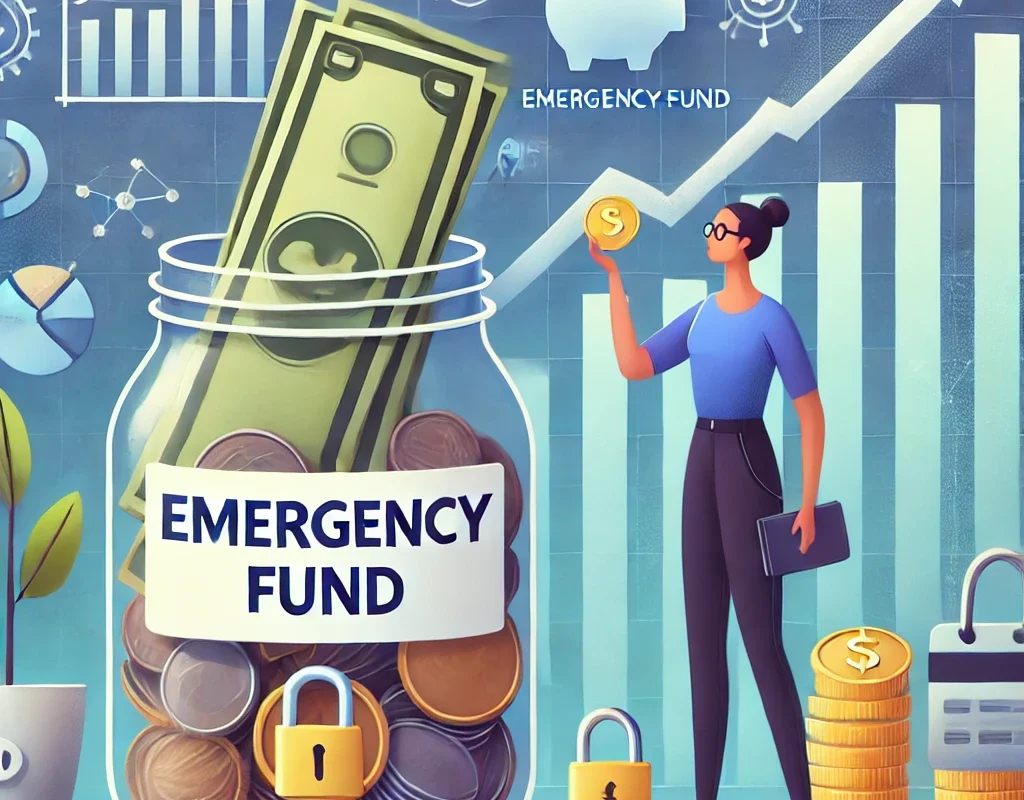Building an emergency fund is one of the most essential steps on the path to financial independence. Whether you’re looking to avoid debt, prepare for the unexpected, or simply gain peace of mind, a well-structured emergency fund provides the financial cushion you need. By setting achievable goals and making consistent contributions, you can lay a foundation that supports long-term wealth and financial freedom. In this article, we will explore step-by-step strategies on how to build an emergency fund and use it as a tool for reaching financial independence.
What Is an Emergency Fund?
An emergency fund is a dedicated amount of money set aside to cover unforeseen expenses. This could include anything from a sudden medical bill to a job loss or a car repair. Unlike regular savings, which you might dip into for planned purchases, your emergency fund should only be used in genuine emergencies. The key is to have liquid assets readily available, meaning they can be quickly accessed without the risk of market fluctuations or penalties.
The purpose of an emergency fund is to give you a financial buffer that keeps you from turning to credit cards or loans in a pinch. It’s a safety net that allows you to meet life’s inevitable curveballs with confidence and security.
Why You Need an Emergency Fund
Unexpected expenses are a reality of life. Whether it’s an unexpected medical issue, a sudden job loss, or urgent home repairs, these events can put a significant strain on your finances if you’re unprepared. Without an emergency fund, many people are forced to take on high-interest debt or make significant sacrifices just to get by.
An emergency fund ensures that you have money set aside specifically for these situations. This financial safety net not only helps you avoid falling into debt but also allows you to focus on other important aspects of your life without the constant worry of “what if.”
In addition, building an emergency fund is one of the foundational steps toward financial independence. Having a reliable financial cushion allows you to take calculated risks, pursue new opportunities, or weather economic downturns without compromising your long-term financial goals.
Steps to Build an Emergency Fund
Establishing a Savings Goal
Before you start building your emergency fund, it’s crucial to establish a clear savings goal. A good rule of thumb is to aim for three to six months’ worth of living expenses. To calculate this, take stock of your essential monthly costs—housing, utilities, groceries, transportation, insurance, and debt payments. Multiply that figure by the number of months you want to cover. For example, if your monthly expenses are $3,000, your emergency fund goal should range from $9,000 to $18,000.
Choosing the Right Account for Your Emergency Fund
Selecting the right type of account is essential to the success of your emergency savings plan. You’ll want a liquid account—meaning you can easily access your money when needed. High-yield savings accounts are ideal, offering a higher interest rate than regular savings accounts while still providing easy access.
Alternatively, money market accounts and short-term Certificates of Deposit (CDs) can also be considered, but remember that the primary goal is accessibility. Avoid putting your emergency fund in riskier investments, like stocks, which can fluctuate in value and be difficult to liquidate in a hurry.
Automating Your Savings
Automating your contributions is a powerful way to stay on track without having to think about it. By setting up automatic transfers from your checking account to your savings account, you ensure that money is regularly added to your emergency fund without the temptation to spend it. Automating also helps develop discipline in saving, making it easier to reach your goal over time.
Starting Small and Gradually Increasing Contributions
If you’re just getting started, don’t be discouraged if you can’t save a large amount right away. Begin with small, manageable contributions. Over time, as you get into the habit of saving and your income grows, increase your contributions. The important thing is to start now and build momentum. Even if it’s just $25 or $50 a week, consistency is key.
How Much Should You Save?
Understanding Your Monthly Expenses
To determine the amount you need to save in your emergency fund, begin by taking a detailed look at your monthly expenses. This includes housing costs (rent or mortgage), utilities, groceries, transportation, insurance, and any minimum debt payments. Calculate your monthly “bare bones” budget—how much you need to survive in a worst-case scenario.
The Ideal Emergency Fund Size: 3 to 6 Months of Expenses
Most financial experts recommend saving enough to cover at least three to six months’ worth of essential expenses. For someone with a stable job, three months may be sufficient. However, if your income is irregular, or if you’re self-employed, six months or even more may be a safer bet. This gives you ample time to find a new job or navigate other challenges without resorting to debt or selling investments at an inopportune time.
Best Places to Keep Your Emergency Fund
High-Yield Savings Accounts
A high-yield savings account is one of the best places to store your emergency fund. These accounts offer better interest rates than standard savings accounts, meaning your money can grow at a faster pace while still remaining liquid. Make sure the account is FDIC-insured, ensuring your money is protected up to $250,000.
Money Market Accounts
Money market accounts can also be a great option for your emergency fund. They typically offer competitive interest rates and allow you to write checks or use a debit card. However, like savings accounts, these should not be seen as investment vehicles but rather as a safe place to park your emergency savings.
CDs (Certificates of Deposit)
Certificates of Deposit (CDs) can be another option for a portion of your emergency fund, especially if you’re willing to trade liquidity for higher returns. CDs lock in your money for a set period, often offering higher interest rates. However, there are penalties for early withdrawal, so make sure you only invest in CDs if you’re confident you won’t need that money immediately.
Emergency Fund vs. Other Savings
It’s important to differentiate between your emergency fund and other savings goals. Your emergency fund is strictly for unexpected expenses and should remain untouched unless a true emergency arises. Other savings goals—like a down payment on a house, vacations, or a new car—should be kept separate. By distinguishing between these types of savings, you avoid depleting your emergency fund for non-urgent needs.
Common Challenges When Building an Emergency Fund
Overcoming the Temptation to Spend
One of the biggest challenges in building an emergency fund is the temptation to spend it on non-emergencies. To overcome this, consider placing your emergency fund in an account that’s not directly linked to your checking account. Out of sight, out of mind. It’s also helpful to clearly define what constitutes an emergency for you—this will prevent unnecessary withdrawals.
You Can Also Read : How to Transition from a 9-to-5 Job to Financial Independence
Managing Inconsistent Income
If you have a variable income, building an emergency fund can seem daunting. During high-income months, increase your contributions to make up for lower-income periods. Focus on reaching smaller milestones, such as one month’s expenses, before aiming for larger goals.



